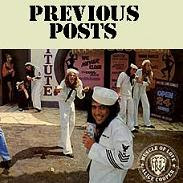U.S., Russian Icebreakers Open Path To Antarctic Base
U.S. ships have delivered food, fuel and equipment to Antarctic science bases, despite fears they would not be able to pass through the ice pack formed behind the world's largest iceberg, the National Science Foundation says. A fuel tanker and cargo ship, following a 94-mile path cut by icebreakers through up-to 10-feet-thick ice, reached the pier at the U.S. McMurdo Station on McMurdo Sound, NSF spokesman Arthur Brown said. This year's sea ice extended more than 90 miles north of the McMurdo Station, after building up behind the world's biggest iceberg, known as B15A, which has blocked wind and water currents that usually break up ice floes in the sound. It normally extends only around 11 miles from McMurdo. McMurdo, which is almost due south of New Zealand, is Antarctica's largest station. Supplies for almost all U.S. Antarctic operations are funneled through McMurdo. It's the farthest south that ocean-going ships can reach. Brown said the American icebreaker Polar Star and Russian icebreaker Krasin encountered ice between 5 and 10 feet thick as they cut the channel. The icebreakers "had a bit of maneuvering to do to get round B15A and its remnant pieces. But once that was done they had a pretty straight shot to open a channel up into McMurdo Station," Brown said. Three weeks ago scientists said B15A, a 100-mile long iceberg, had run aground within three miles of slamming into a huge glacier known as the Drygalski Ice Tongue. It blocked paths to the sea for thousands of penguins, leaving up to 50,000 penguin chicks to starve to death in the area this season. The two icebreakers escorted the U.S. Navy fuel tanker USNS Paul Buck to pier m made of ice pier at the McMurdo Station in late January to unload its cargo. The tanker unloaded about eight million gallons of fuel in 48 hours. The Paul Buck left McMurdo on Jan. 31. The cargo vessel American Tern arrived at McMurdo on Feb. 3. It's unloading and is expected to leave McMurdo on Feb. 11. Although U.S. Air Force and New York Air National Guard cargo flights from New Zealand operate on a regular schedule during the annual Antarctic research season (October through February), planes alone aren't able to carry enough supplies to keep the nation's Antarctic research program running. Each year, a channel must be broken through the ice that forms on McMurdo Sound to allow access for the tanker and cargo ship. This year's icebreaking operations were more challenging for two reasons: the extent of the sea ice was much greater than in previous years, and only one Coast Guard icebreaker was available to perform the mission. The Polar Star's sister ship, Polar Sea, is drydocked for long-term repairs. NSF chartered the Krasin from the Far East Shipping Co., a Russian firm. A search by officials in NSF's Office of Polar Programs found that Krasin was the only qualified ship available on the world market to assist the Polar Star.
U.S. tanker Paul Buckand, at the McMurdo ice pier with Russian icebraker Krasin in the background.




















<< Home